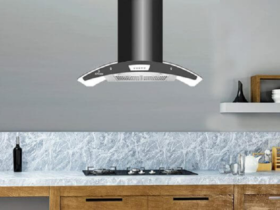If you’re planning to install a deck in your backyard, composite decking might just be the perfect solution you’re looking for. Composite decking is a popular choice among homeowners due to its durability, low maintenance needs, and aesthetic appeal. However, before you jump into the installation process, there are a few critical things you need to know. This article will guide you through understanding composite decking, pre-installation considerations, choosing the right composite decking material, and planning and design.
Understanding Composite Decking
Composite decking is a synthetic material made from a mixture of wood fibers and plastic. The key advantage of composite decking over traditional wood is its resistance to rot, splintering, and insect damage. It’s available in a wide range of colors and finishes, making it an ideal choice for those who want a personalized touch for their outdoor space.
But like any other home improvement project, installing composite decking requires careful planning and preparation. One of the most important things you need to consider is the warranty. Some composite decking manufacturers offer extended warranties, providing you with peace of mind and protecting your investment.
Pre-Installation Considerations
Before you start the installation process, you need to prepare the area where you plan to install the deck. This includes removing any existing structures, leveling the ground, and ensuring there are no underground utilities that might pose a risk during installation.
It’s also essential to consider your local climate conditions. Composite decking performs exceptionally well in various weather conditions, but it’s still vital to ensure that it’s suitable for your area. For instance, if you live in a region with heavy rainfall, it might be worth considering composite decking with water-resistant properties.

Choosing the Right Composite Decking Material
While all composite decking materials offer durability and longevity, not all are created equal. Some materials are more resistant to fading, while others are better at resisting scratches. It’s essential to choose a composite decking material that suits your lifestyle and the specific needs of your outdoor space.
For instance, if you have pets or children who frequently play on the deck, you might want to opt for a scratch-resistant material. On the other hand, if your deck will be exposed to direct sunlight for most of the day, a fade-resistant material would be a good choice.
Planning and Design
Once you’ve chosen the right composite decking material, the next step is to plan the layout of your deck. You should consider factors like the size of your deck, its purpose, and its location in your backyard. For instance, if you plan to use your deck for outdoor dining, you should ensure there’s enough space for a dining table and chairs.
Design is equally important. While composite decking is available in various colors and finishes, you should choose a style that complements the overall aesthetic of your home. You can also add features like built-in benches or planters to enhance the functionality and visual appeal of your deck.
Understanding Composite Decking
Composite decking is a man-made decking material composed of recycled wood fibers and recycled plastic. Its durability, resistance to rot and insects, and minimal maintenance requirements make it a preferred choice for many homeowners. Composite decking comes in a variety of colors and textures, offering a high degree of customization to match your home’s exterior design.
The Installation Process
Installation is a vital aspect of composite decking. While it may be more complicated than installing traditional wood decking, the process is straightforward with careful planning. You will need specific tools and materials, including composite deck boards, fasteners, saws, and a drill. It’s crucial to follow the manufacturer’s instructions closely to ensure a successful installation. Additionally, you may need to consider hiring professionals if you lack the necessary skills or time.
Maintenance and Care
One of the significant advantages of composite decking is its low maintenance. Unlike wood, it doesn’t require staining, painting, or sealing. However, it’s not entirely maintenance-free. Regular cleaning with a mild soap and water will help maintain its appearance. More intensive cleaning may be necessary to remove tougher stains or mold. Always follow the manufacturer’s cleaning recommendations to prevent damage.
Cost Considerations
Composite decking is generally more expensive upfront than traditional wood decking. However, when considering long-term costs, the investment may be worth it. The reduced need for regular maintenance and repairs can result in significant savings over time. Moreover, the longevity and durability of composite decking can enhance your home’s resale value.
Benefits and Drawbacks
Composite decking offers numerous benefits, including durability, low maintenance, and resistance to rot and insects. It also provides a variety of aesthetic options, from colors to textures. However, it also has some drawbacks. Initial costs can be high, and although it mimics the look of wood, it doesn’t quite capture the same natural feel. It can also be slippery when wet and may fade over time with exposure to sunlight.

Conclusion
Composite decking is a durable, low-maintenance decking option with a wide range of aesthetic choices. While the upfront cost may be higher than traditional wood decking, the long-term savings and benefits can make it a worthy investment. It’s crucial to understand the installation process, maintenance requirements, and cost considerations before deciding. With careful planning and informed choices, you can create a beautiful, functional outdoor space that enhances your home’s value and your quality of life.
Remember, every home improvement project is an investment in your future. Make sure your choices reflect your lifestyle needs and long-term plans. Happy decking!








Find Us on Socials